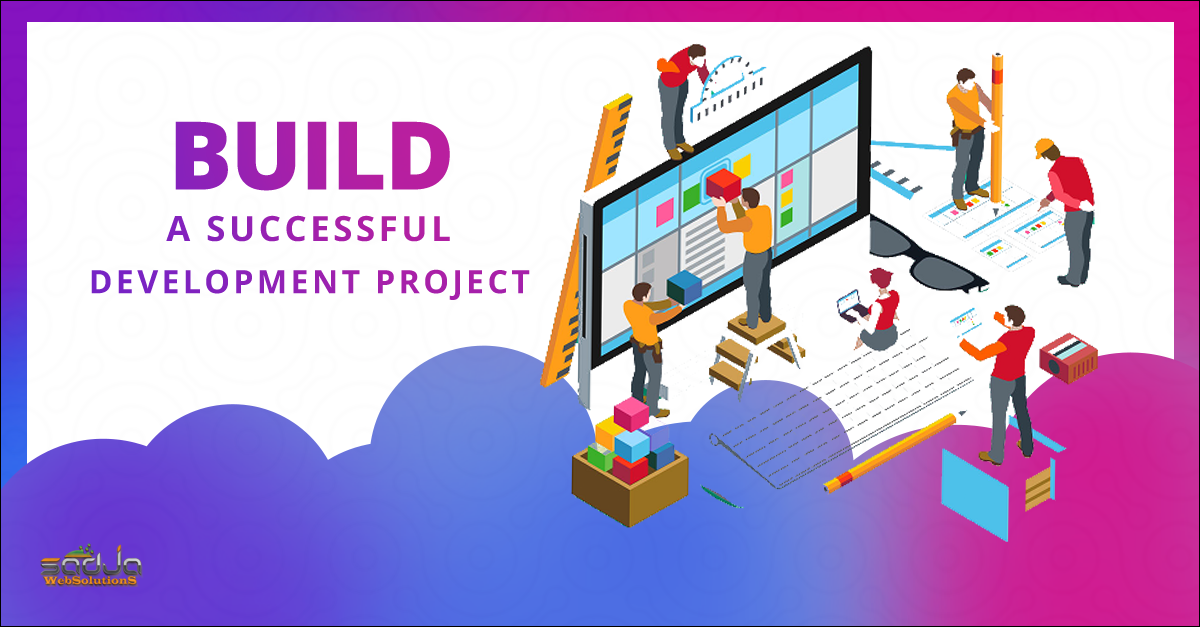Initiating a new or updated website does not need to sound overwhelming if you consider your needs and resources right from the start.
A good plan is essential for building the website, whether you choose to do it yourself or to hire a website development company.
Core phases
The following phases will be invaluable in ensuring a strong foundation for your website development project.
1. Identify clear objectives
Part of your planning process will involve identifying what goals you want to score with your new website. Find out what gaps your new website will fill and how your new website project will help you fill these gaps.
2. Assemble the right team
The make-up of your team will depend on the goals you have already identified as a first step. What is essential is to ensure that you identify a well-rounded project team comprising
- Digital Strategist
- Analytics Specialist
- IA/Planning (UX Planner)
- Content Specialist
- Designer
- SEO Specialist
- Technical Project Manager
- Account Director
- Client Partner
Right from the start, the collaboration between team members is essential. The roles and responsibilities of each team member must be spelt out. It is also crucial to identify how much time each team member needs to devote to work per week. Conduct a staff training needs assessment and design a training plan according to the needs of the team.
3. Research and evaluate possible options
Research your web project sector and look out for content and services that can inform your planning. Meet people engaged in the same projects and Ask questions related to their planning process and site implementation. Find good examples of successful sites visit sites that can give you great hints for successful, planning and execution of your website project.
4. Define your target audience
You need to ask a set of questions that will guide you define your audience. Some of the most important questions include;
- Identify the various segments of your target audience and describe them.
- How big is your audience?
- How do your audience interface with your organisation?
- In what ways do the various segments of your audience use technology?
- What do they want from your organisation?
- What will these audiences gain from your new website?
5. Outline your strategy
Your strategy needs to include everything that you have learned; from goal setting and assembling the right team, to research, evaluation and your target audience. This information is essential for developing a strategic vision for the project.
To create this vision, our team of strategists start by outlining objectives and recommendations using;
- analytics
- competitive analysis
- a current site audit
- Crucial stakeholder interviews
- audience research
The strategists work closely with other project team members in each department to explore ways to achieve a company’s business objectives by leveraging human-centric solutions.
Recommendations from each team member are incorporated into the strategy, which helps to shape the rest of the project.
Deciding stages and top-level goals is critical
We could talk finally about each of the objectives, procedures, and expectations that each step covers. But, instead of diving too profoundly into our capabilities, we’ll address the central components and goals for each phase of the website development project before it moves to advancement.
Discovery
The discovery phase requires the team members to learn about the customer, the business, and task objectives. The team may also take a look at how they identify with their current advanced nearness, brand, and business objectives.
In this stage, we genuinely investigate a brand’s transformation procedure, item or deals lifecycle, contenders, industry situating, and current showcasing activities. In any case, more critically, we reveal what sorts of encounters clients are having over a brand’s whole commitment scene.
By comprehension the ecosphere the customer as of now works in, we better position ourselves for giving essential suggestions that upgrade the purchaser venture and accomplish business sway.
Information Architecture / Planning
The site technique legitimately educates information architecture/planning, and the choices made around forming client experience.
Where the methodology group conveyed an exhaustive information base and vital bearing, IA/arranging specialists help convert the procedure into an easily understandable application.
A UX-driven design is orchestrated in anabsorbable arrangement for clients.
Typical deliverables during the IA/planning phase include:
- A defined list of site features and technical integration considerations
- A site map that details the number of pages, and shows the location of these pages on the site, and how they relate to each other
- User journeys that demonstrate how a user will interact with the site
- Desktop and mobile wireframes that provide a visual blueprint of the arranged elements per page before design.

Design
After strategy and Information Architecture /planning comes to plan. Working with strategist and IA/UX proposals, design specialists take the affirmed webpage design, customer or style controls, and take a look and feel that breathes life into the site.
Consider configuration best practices, patterns, and industry rules, must also be considered. At Sadja web solutions, our planners consolidate human-focused structure and visual narrating to make paramount and connecting with client encounters.
At that point, utilising our versatile first way to deal with a plan (and at last, advancement), ideas are made in the accompanying gadget breakpoints: portable, work area, and tablet.
The structure is a fun and shared procedure, that when executed effectively, empowers a brand to arrive at their sites goals and give clients individuals centred story-driven encounters.
What Next
With these fundamental components set up, it’s an ideal opportunity to hand the project over to the development team, which executes on the team’s vital, innovative, and client-centred vision.
Aim for success
Every effort you make will help your team take stronger decisions, understand your goals, and pave the way for a smoother and more cost-effective project.
Do you need a web specialist? Look for recommendations from people you trust – other organisations in your sector, long-term vendor partners and other technical support resources.



